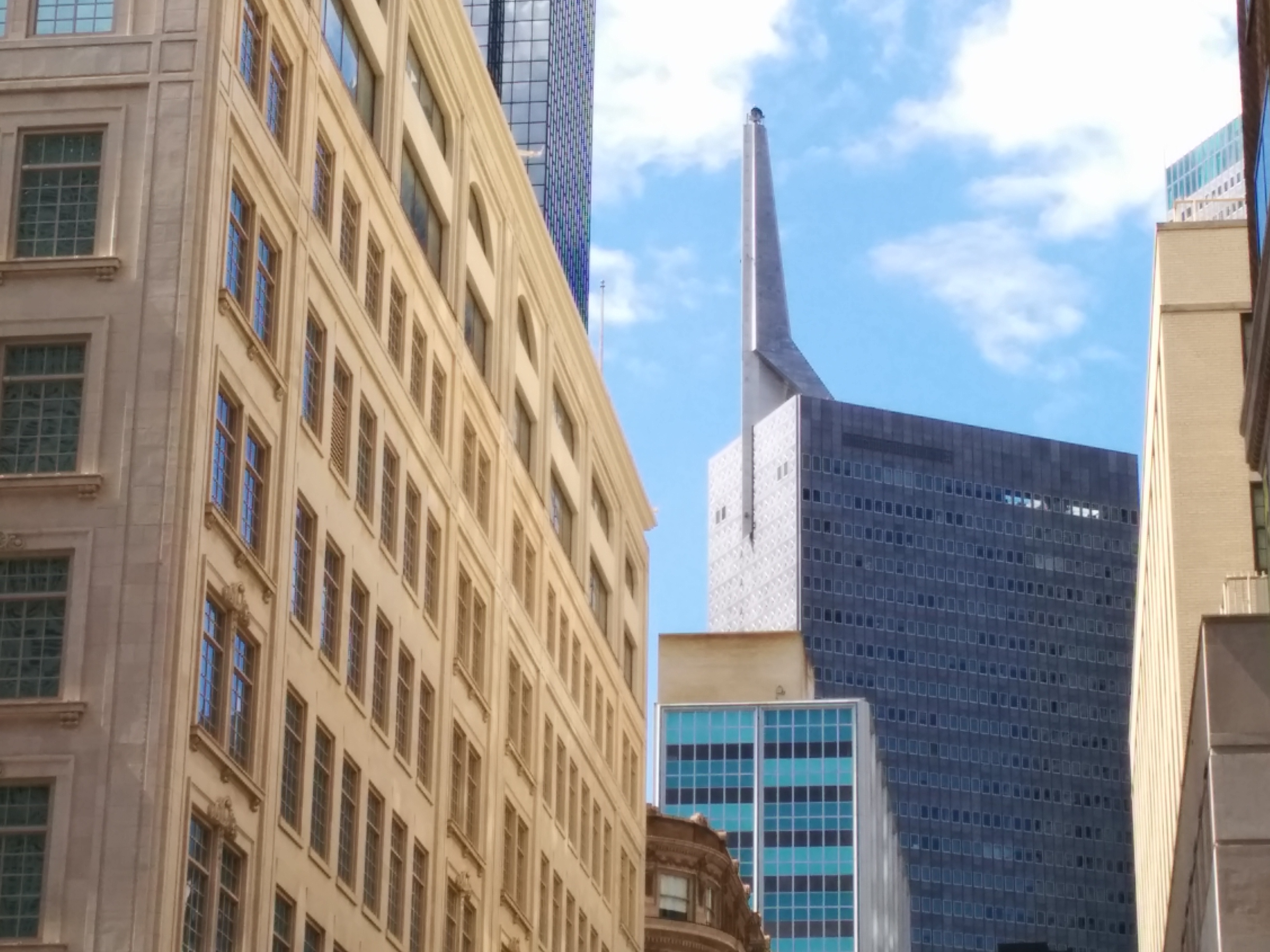A few weeks ago I hopped on the train, my expired library card in hand. Since the branch library just a few blocks away from me is closed most of the weekend, I elected to head to the central library, downtown. After a late lunch at the Friday’s in moribund West End, I walked over to the J. Erik Jonsson library.
I was greeted by the gargantuan, pre-fab concrete building as it pumped classical music, possibly from city-owned WRR 101.1, out onto the surrounding sidewalk with worn benches and dead pots of what was formerly greenery. Looks like they ran out of grounds money. The foyer is dark. Dusty, grimy (out of cleaning money), with very little in it aside from the cornerstone from the original library and Harry Bertoia’s Textured Screen sculpture hanging from the tall ceiling. Textured Screen came out of the previous and much better looking Central Library next to the Statler Hilton on Commerce. A few folks on cell phones and City of Dallas security guards sprinkle the hall. I proceed into the first floor circulation area.
They’ve placed a few lights on this floor, since there are actual books to read and work to be done in this area. The library staff are extremely friendly and welcoming as I hand them my card to renew. I decide to have a look around.
The new fiction is well stocked and very well kept, although nothing interested me at the moment since I still had a paper to write for a class before I could work back into leisure reading. One thing I had always heard about the main library was that it held one of the few remaining original printed copies of the Declaration of Independence. Most directional signs pointed out it’s location, so I headed on the rickety elevators and headed upstairs. As I was lifted to the local history floor, I was greeted by a poster of the basic rules of the library, including the important “NO BATHING” rule. Exiting the elevator, the local history floor contained a quiet glass-lined room filled with large tables and microfiche machines. The carpet was old and needed the wrinkles tightened out.
I continued to follow the directional signs until I reached an absurdly dark corner of the floor. Largely forgettable artifacts sat in dimly lit shadowboxes. Eventually I got to the Declaration of Independence. Even darker in this partitioned area, it’s hard to read the informational exhibit leading up to the item itself. Fumbling to it, I was stunned.
Here, in the decrepit, cash-strapped confines of the main branch of one of the poorest metropolitan library systems in the US, is one of the most important documents in US history. It’s ours. The city owns it. Dallas takes care of it. The library may not look nice, but the document is as pristine as a document from 1776 can be. Any Joe Schmo or destitute hobo can head to the 7th floor and see a document that everyone should have the pleasure of seeing. Dallas provides that pleasure.
The Central Library is one of the most affected victims of the Miller and Leppert eras of municipal governance. The libraries became an easy scapegoat for government waste and were cut mercilessly. Although the printed word may not be as popular as it may have been, city libraries are still a repository of information as well as a distributor of ideas and knowledge. The library is a great equalizer. More privileged folks can check out a book to see if they want to buy it; poor folks can check out a book since it’s the only way they can get it. People who can’t afford a computer can have access to the limitless information the Internet provides.
Libraries will need to continue to evolve, but their purpose remains the same: to provide knowledge to everyone. It’s been said that a city can be judged by its libraries. Dallas’ libraries do the best they can, but they will easily fail if not paid attention to by our city officials. If they do pay attention soon, we could proudly be judged by our libraries.
